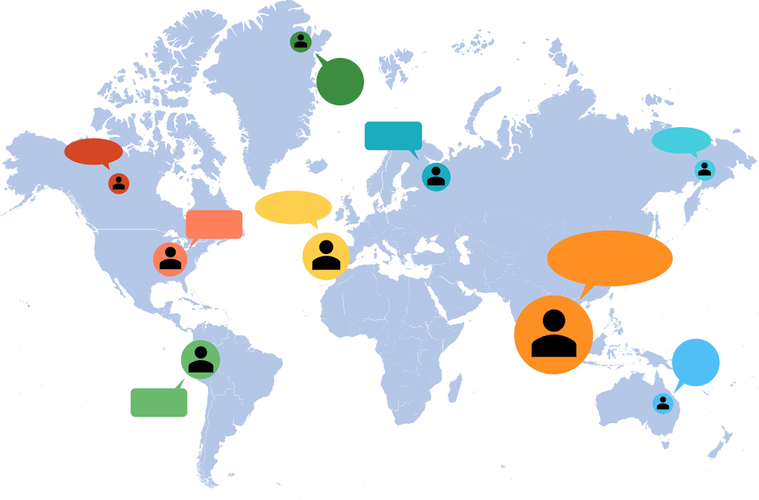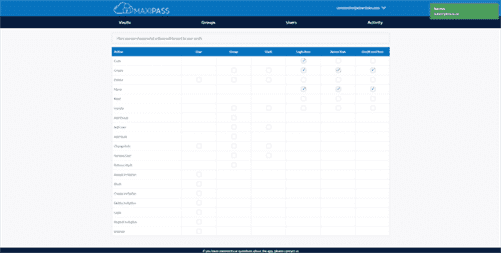We were a X shop and we were in a position where a full refresh was required. During this time we questioned others in the industry as to how their experiences were with their switch vendor. Fortinet presented our enhanced wireless offerings, including FortiAIOps and FortiGuard services running on FortiAP at Tech Field Day’s latest wireless event. Well performing networks are the key to productivity, yet Security is an often overlooked factor to keeping the network running at peak performance. This App Note covers using Hanshow or SES Imagotag ESL tags with FortiAP devices managed by FortiGate.
A 104-bit key later became available after the U.S. government lifted certain federal restrictions. To successfully enroll using Wi-Fi Direct, the receiver device must be utilizing Knox version 3.2.1 and above or Android P OS and above. The Knox Deployment App does not support the enrollment of Samsung devices without Knox. Look at this list of supported devices to check whether your device is supported or not. Assuming that a User (or Client) originally joined the WLAN on WLC1, WLC1 will always refer to itself as the User’s anchor point. Any controller that is serving the User from a different subnet is known as a foreign agent.
Wireless security: WEP, WPA, WPA2 and WPA3 differences
This guide provides best practices for network design, deployment, and configuration of enterprise wireless environments with WatchGuard Wi-Fi Cloud. On the Security Authentication page, set Authentication mode to Semi-open network, select Password required, and set Key type to PPSK. If automatic MAC address binding is enabled, when a device accesses an SSID for the first time, the device’s MAC address and PPSK account will be automatically bound.
- On top of all that is the endless march of increasingly sophisticated attacks, including some that seek to exploit vulnerabilities in enterprise wireless networks.
- It uses cipher block chaining message authentication code to ensure message integrity.
- For public cellular connectivity, mobile network operators can audit and certify fiber backhaul connections and radio coverage / designs that power the 5G network within such enterprise environments.
- This delivers self-healing and automatic provisioning to maximize overall private network capacity and maintain application quality.
- When choosing from among WEP, WPA, WPA2 and WPA3 wireless security protocols, experts agree WPA3 is best for Wi-Fi security.
LOCH’s mission is to help organizations master rapid transformation and thrive in a wireless world. Wi-Fi access points and service provider routers right-sized for any organization. ‘Wire-like’ performance with powerful edge services secure the network and enhance the user experience. WIPS (Wireless Intrusion Prevention System) is a best-in-class wireless security architecture based on several patents. The system provides comprehensive protection from wireless threats, such as rogue APs, ad-hoc networks, client mis-associations, honeypots and evil twin APs, DoS attacks, and BYOD (Bring Your Own Device) risks including mobile hotspots. Juniper’s AP auto-placement and orientation solution leverages the innovative location engine and machine learning to recommend anchors and not rely on GPS for anchor placement.
Efficiency Through Onboarding
The wired deployment mode is suitable for users whose network infrastructure is focused mainly on the onboarding of Instant On switches. The initial setup using the Instant On mobile app or web application takes you through a step-by-step process of onboarding your switch. The switch must be powered on and connected to the internet to complete the onboarding process. A wired network is created on completing the initial setup and will serve as the default network for the site and cannot be deleted. Unlike the wireless networks, the wired network will not require you to create an SSID and password for the network.
While many commercial carriers are familiar with these steps, 5G deployments can be challenging for enterprises that are new to cellular technology. Celona partners with organizations to help plan, design, deploy, and manage private 5G networks. We explain the process, the benefits of a private 5G network, and how 5G will affect your enterprise. With a secure connectivity approach, key networking and security components are fully integrated and managed via one operating system, ensuring end-to-end consistency and visibility. Many networking vendors falsely claim they can do this, so knowing what to look for is important. The ability to support remote workers is essential for an organization’s business continuity plan.
These are lessons from our engagement and conversations with MNOs, private wireless vendors, system integrators, and enterprises involved in early private wireless implementations. The unique hierarchical location-based policy management architecture simplifies management of multiple locations from a single UI. You can define role-based administration, Wi-Fi configurations, WIPS policies, and perform monitoring and troubleshooting in a logical context to specific locations. WatchGuard APs are cloud-managed, but provide full functionality even when Internet access is unavailable. For example, when a WatchGuard AP reboots without access to the Internet, the AP uses a locally stored configuration to operate. The Wi-Fi Cloud solution is built on a controller-less architecture and only encrypted management traffic is sent to the cloud.
Without open-ended communication between AP and client or encryption key reuse, cybercriminals can’t as easily eavesdrop or insert themselves into an exchange. Industry analysts widely acknowledged KRACK as a serious WPA2 security flaw. The finding prompted technology providers to quickly roll out software patches to mitigate risk until the arrival of the next generation of wireless security.

You can easily manage your wireless network and security with a single console to minimize administration time. Some may ask why AP auto-placement and orientation are needed when software vendors like Ekahau, Hamina and others already handle predictive wireless network design, placement and performance optimization? We’re not looking to replace these proven wireless network design tools, but rather complement them with enterprise wireless deployment real-world measurements that use AI/ML to optimize AP placement and orientation. Often times the plan does not match the actual deployment, and that post deployment validation requires human intervention to verify AP placements on the floor plan. The predictive design may have figured out what the coverage looks like and identified the placement, but during the installation the APs didn’t end up in the exact locations.

In contrast, wireless security primarily concerns itself with traffic that travels over the air between wireless devices. These include wireless access points (APs) communicating with a controller device (or, on a mesh network, with each other), as well as communications between APs and endpoints connected to the Wi-Fi network. As a mid-experienced user of Aruba Access Points products, my overall experience has been exceptionally positive.


















